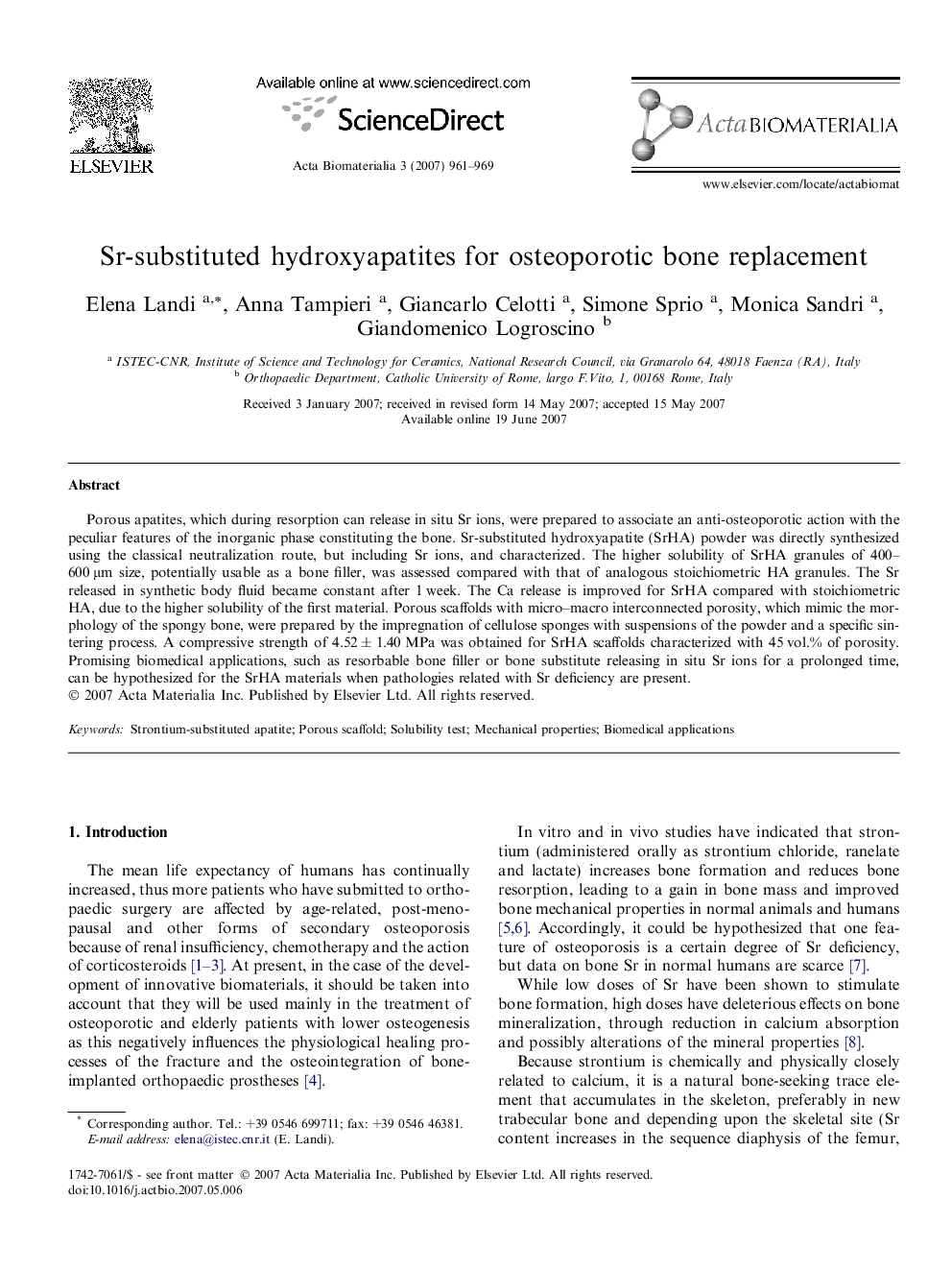| Article ID | Journal | Published Year | Pages | File Type |
|---|---|---|---|---|
| 2480 | Acta Biomaterialia | 2007 | 9 Pages |
Porous apatites, which during resorption can release in situ Sr ions, were prepared to associate an anti-osteoporotic action with the peculiar features of the inorganic phase constituting the bone. Sr-substituted hydroxyapatite (SrHA) powder was directly synthesized using the classical neutralization route, but including Sr ions, and characterized. The higher solubility of SrHA granules of 400–600 μm size, potentially usable as a bone filler, was assessed compared with that of analogous stoichiometric HA granules. The Sr released in synthetic body fluid became constant after 1 week. The Ca release is improved for SrHA compared with stoichiometric HA, due to the higher solubility of the first material. Porous scaffolds with micro–macro interconnected porosity, which mimic the morphology of the spongy bone, were prepared by the impregnation of cellulose sponges with suspensions of the powder and a specific sintering process. A compressive strength of 4.52 ± 1.40 MPa was obtained for SrHA scaffolds characterized with 45 vol.% of porosity. Promising biomedical applications, such as resorbable bone filler or bone substitute releasing in situ Sr ions for a prolonged time, can be hypothesized for the SrHA materials when pathologies related with Sr deficiency are present.
